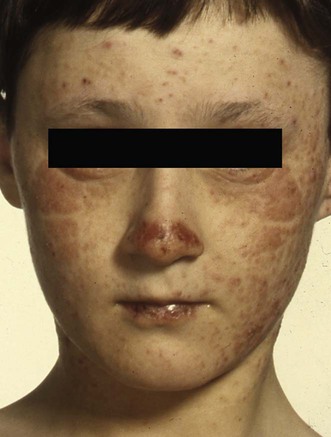Actinic prurigo
(Synonyms: hereditary polymorphic light eruption of American Indians, Hutchinson’s summer prurigo, photodermatitis in North American Indians)

Specific investigations
![]()
Stay updated, free articles. Join our Telegram channel

Full access? Get Clinical Tree





